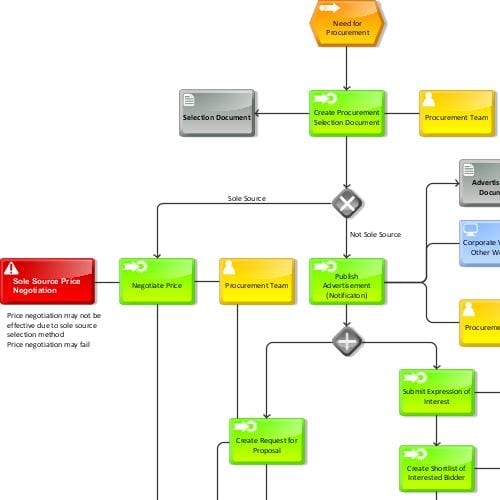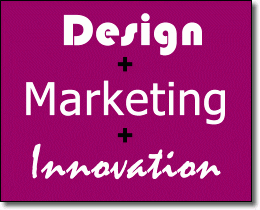Customer-Centric Innovation? Sure, But With Which Customers?
Today, putting customers at the heart of innovation is a no-brainer for most business managers. However, should the innovation process involve all customers or only specific segments? In this article we explore the hurdles of these initiatives and propose a method to select the most relevant customers with whom to innovate.
Innovation Via the Customer Journey
Innovation is usually spoken of in relation to products, research, and development. However, every aspect of your business can be innovated. In fact, one of the most important – and often overlooked – is customer service. Innovative customer service helps you build loyalty, encourages repeat business, and can also bring in new buyers as they observe how you care for your consumers.
Five Takeaways from Our Innovation Conversation with Clorox
IdeaScale hosts a monthly podcast with innovation leaders, intrapreneurs, and other game changers out there. This past month our interviewee was Dr. Navin Kunde who currently leads the Open Innovation group at The Clorox Company, a US-based consumer goods company in the Fortune 500.
The Competition is Not Who You Think It Is
It has become extremely difficult to foresee competition. But this isn’t cause for alarm. It’s now far more important to forge ahead with innovation, allowing a product or service to evolve in new ways, than trying to crush or outsmart perceived competition.
Insource Innovation to Generate Better Ideas & Fuel Product Pipelines
Is innovation a numbers game? We’ve all heard the statistics around the number of ideas it takes to eventually lead to a single successful product. But if we look at why it takes 3000 to 6000 or more ideas to find a single winning concept, the answer becomes fairly obvious: not every idea is a good idea. Mark Atkins explores how we can create better ideas, not more ideas.
Business Processes Innovation
This article provides a reflexion on how employees innovative mindset could benefit corporation business processes, hence, their results
How to Avoid the Innovation Death Spiral
Consider this all too familiar scenario: Company X’s new products developed and launched with great expectations, yield disappointing results. Yet, these products continue to languish in the market, draining management attention, advertising budgets, manufacturing capacity, warehouse space and back office systems. Wouter Koetzier explores how to avoid the innovation death spiral.
How Strategic Planning Smothers Innovation: One Organization’s Story
The story of a once-innovative financial services firm illustrates the perils of substituting 'messy' innovation with a logical, orderly strategic planning process.
The Future of Innovation Management: 5 Key Steps for Future Success
Looking back is a natural as we look to learn lessons from past activity. But perhaps more interesting is to look forwards. In this article Rick Eagar draws on the results from recent research that surveyed the opinions of global Chief Technology Officers and Chief Information Officers and identifies key changes in five distinct but interrelated innovation management concepts as being important for the years ahead.
Biomimicry: How Business Solves Problems by Looking to Nature
Sometimes, talking about new ways of approaching business benefits from looking at some of the world's oldest ways of doing business. Biomimicry is a practical methodology to solve problems by looking to nature. Learn more from some examples of biomimicry on social media and co-creation.
How to Solve 7 Challenges in Employee Driven Innovation
The collective wisdom of your co-workers is a huge asset in the fuzzy front end. But which challenges do you need to address and solve in order to create a structured and effective employee driven innovation process? Read more about a method using idea markets as a powerful incentive. And it has already proven its worth in a number of large Scandinavian companies.
How to Accelerate Innovation through Challenge Driven Innovation
Challenge Driven Innovation enables companies to tap into diverse perspectives and talent to solve problems faster, more cost-effectively and with less risk, ultimately resulting in accelerated innovation outcomes and improved business performance. In this article Steve Bonadio introduces the concept of “Challenges” and their role in the emerging innovation management framework called Challenge Driven Innovation (CDI).
Copycat Innovation: A Practical Route to Profitable Innovation
Copycat innovation, the act of adapting a solution that has been used successful in another industry or profession, is a more reliable, affordable route to innovation, suggests Dr. Yew Kam Keong, Ph.D.
Measuring for Innovation – A Guide for Innovative Teams
As innovation is a necessity for any organization today, the ability to assess and measure the progress and impact of your innovation efforts might be a true source of competitive advantage. This in-depth article offers fresh experiences, best practice and insights from how a number of multinational companies within the MedTech, telecom and manufacturing industries are working with establishing and implementing innovation measurement programs.
Joe Pine: Economic Value Creation Through the Experience Economy
The Experience Economy is accelerated by the current global crisis according to Joe Pine. People don’t want more stuff, in this post-growth global economy people start questioning what they really value and that is experiences with others, loved ones, colleagues, friends, etc. There’s more demand for experiences and this will create job opportunities, moreover because commoditized services are being outsourced and offshored.
How to Improve Patent Quality by Using Crowd Sourcing
Worldwide filings of patent applications and the ensuing invalidation requests have seen staggering growth over the last decade. The result is increasing patent backlog, deteriorating patent quality and an uncertain economic environment. This article briefly describes the crowdsourcing phenomenon and then details how it can aid patent review.
Want your Organization to Thrive? Create a Supportive Environment for Creativity
Employees have tremendous creative capacity. If properly harnessed with a supportive culture, it can help companies to thrive in today's turbulent business world.
Effective Innovation Management? Back to Basics!
For years, management and business schools have vastly exaggerated the importance of tools and theories in delivering innovations to the markets effectively. As common sense indicates, the overwhelmingly important predictor of success for an innovation is not the use of tools, “innovation frameworks”, or handbook of rules, but the quality of leadership of the project and the talent and motivation of the staff carrying it out. In innovation management, we need to go back to basics.
Highly Innovative Low-Tech Companies?
When you think about low-tech industries, you will probably think about many aspects, except for innovation. Innovation is mostly associated with innovative products and technology, but hardly ever with anything beyond R&D activities. This “myth” can now be refuted through the results of a currently published study “Gaining Competitiveness with Innovations beyond Technology and Products: Insights from IMP3rove”.
Innovation for Financial Services
The concept of “financial innovation” can be defined as making and promoting new financial products and services, developing new processes to facilitate financial activities, to interact with customers and to design new structures for financial institutions. This article takes a look at the needs for innovation in the financial sector and some basic requirements.
How to Master Innovative Leadership
Innovation obviously requires creativity. That much everyone agrees on. However, it has a secret ingredient that must not be left out: Leadership. All innovators have to play leadership roles, whether they are in formal executive positions, or quite the opposite. In this article Alexander Hiam delves deeper on how to master innovative leadership.
Lessons in Business Transformation
Is the world turbulent and hard to predict or changing in discernible ways? Two prominent strategists have different views, but draw similar lessons for business leaders.
Five Strategies to Light a Fire Under Your Innovation Program
How can we introduce a culture of radical innovation into our companies before we get to the brink of bankruptcy? Harvey Briggs shares strategies to make sure your company feels the heat before it's too late.
The Great Innovation Challenge of the 21st Century
Global economic challenges that have had a profound affect on businesses will continue to do so indefinitely. This means that businesses must not only innovate in order to survive, but they will need to innovate in new ways to meet the changing needs, expectations and financial situations of their customers.
Five Lessons to Boost Your Innovation Practices
Innovation ain’t what it was. It was once the province of a department, with a clear remit: new product development. Today, it’s everywhere. It concerns not only products and services, but also processes, technologies, business models, pricing plans, and routes to market, even performance management practices – the whole value chain in fact.
Savvy tips for improving your innovation momentum
Innovation is a complex and difficult process. To increase your odds of success when starting an innovation initiative, there are a number of factors you ought to keep in mind.
How to Link Design, Marketing and Innovation
Over recent years the terms innovation and design thinking have taken on a life of their own through a variety of channels and media. Millions of words have been written on these topics by journalists, consultants, practitioners, and curious bystanders. Then throw in discussions about design itself and an even wider range of opinions emerge. What is a business leader supposed to make of all of this?
Educating Innovators
When does innovation begin? Is it at the moment of inception, or at the moment of adoption, or at the moment when the new innovation really displaces the old? An interesting question, especially as the implications of each milestone are fundamentally different, yet each is a profound accomplishment in their own right. British historian David Edgerton has argued in his book The Shock of the Old for a focus on something between adoption and dominance; and reliance upon what he calls “use-centered history” to mark the real impact of new innovations.










